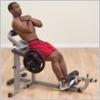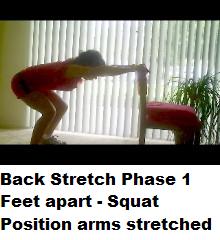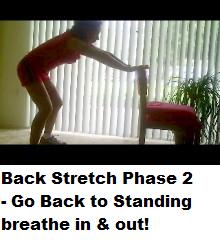Approximately 80% of adults are estimated to have some kind of back injury in their lifetime and 10 percent will suffer from a back re-injury, according to Premier back statistics.
The best way to prevent back pain is to become educated in the ways back injuries occur and form a preventative plan. One of the top ways to avoid a back problem is to lift objects properly. There are 7 different proper lifts that you can pick from to keep a healthy back and use your leg strength and not your back to pick things up the right way! Follow along with the video below that shows the 7 proper lifts as the lifting techniques are spelled out underneath.
Avoid Back Problems with the 7 Proper Lifts
-  Deep Squat Lift - Do a full squat where hips are below knee level. Arms and legs are parallel with an anterior pelvic tilt. Always keep object close for strong base of support – good for medium to heavy lower objects. Grab object at the sides or under the bottom of the object.
- Traditional Lift – Get in standard squat position except feet are anteroposterior on each side of object. Good for heavy, low objects – place object between legs to maintain low center of gravity while wide base of support.Â
- Power Lift - Go into a half-squat for lifting taller and lighter objects where hips are above knee level. Arms and legs are parallel – grab sides of the object, while maintaining a more vertical position with an anterior pelvic tilt.
- Straight Leg Lift – Knees can be slightly bent in this lift known for picking up grocery bags. Grasp sides of the object and hold object close to the body.
- One-Leg Stance Lift – This lift is also known as the “golfer’s lift†and it is for very light objects weighing upto a couple pounds at most. The body will go horizontal, while maintaining a straight back and always keep the front leg over the heel (making a 90 degree angle). The back leg can be straight or slightly bent. Again secure object close to body.
- Half-Kneeling Lift – good for objects of various sizes and weights. However, AVOID this type of lift if you have a knee problem! This is a useful lift for people of small stature with great balance. The goal of the lift is to secure objects close to the body before standing.
- Stoop Lift - This is a great lift for an object below waist level. This is the common lift for different types bags and/or items with handles (i.e. suitcase, purse, brief cases, pails, tool boxes, etc). Just partially flex hip and knees, while maintaining a straight slightly forward back. Feet are shoulder width apart and slightly anteroposterior from each other.
I hope these tips help you “back up†and regroup and start rearing in the right direction in back health! Remember: Keep using your Legs and Rear Muscles when lifting and NOT your back! For more info – Alicia Weber is a fitness expert with YourHealthUpdates.com



